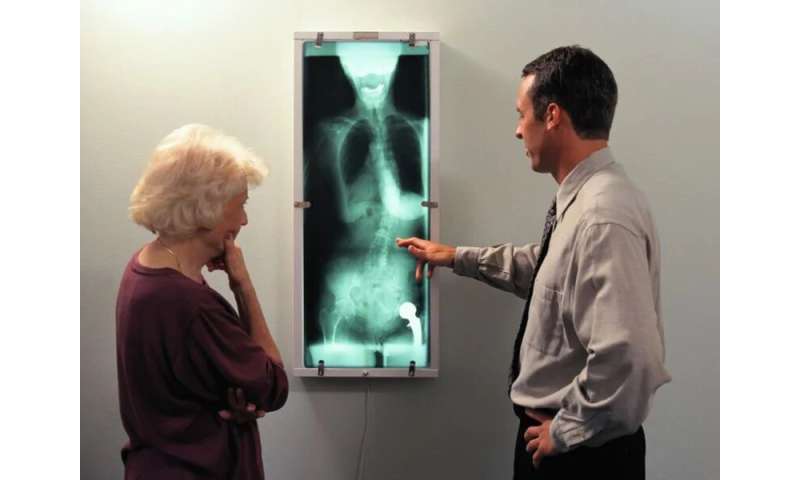
(HealthDay)—Patients with lower back problems often worry about how much time they’ll need to recover if they have surgery. A new study finds similar results for two common minimally invasive spine procedures.
Surgery may be recommended for degenerative conditions of the lower spine, such as a herniated disc or spinal stenosis.
Researchers at Hospital for Special Surgery in New York City compared 117 patients who had minimally invasive lumbar decompression surgery and 51 who had minimally invasive lumbar spine fusion surgery. All the procedures were performed by the same orthopedic surgeon.
“Our study is the first of its kind to look at return to activities and discontinuation of narcotic pain medication after single-level lumbar decompression or single-level lumbar spine fusion performed with a minimally invasive technique,” said senior investigator Dr. Sheeraz Qureshi, a spine surgeon at the hospital.
It took the 117 decompression patients a median of three days before they no longer required narcotic pain medication, and seven days for the 51 spinal fusion patients.
Among patients who drove before their surgery, decompression patients took a median of 14 days to resume driving, and 18 days for the fusion patients.
There was no statistically significant difference between the two groups in how long they took to return to work, according to the study.
The findings are important because standard open spinal fusion surgery generally requires a much longer recovery and slower return to activities than standard lumbar decompression, Qureshi noted.
“In our study, all the patients in both groups were able to resume driving and return to work within three weeks of surgery,” he said in a hospital news release.
“When you compare this time frame to that of standard open spinal fusion surgery, it’s really striking. Patients having a standard spinal fusion could take six months or longer for a full recovery,” Qureshi said.
Degenerative conditions of the lower spine are common causes of pain and disability, and surgery may be considered when initial treatments such as medication and physical therapy don’t provide relief.
Lumbar decompression surgery involves removal of a small section of bone or part of a herniated (bulging) disc that is pressing on a nerve. Spinal fusion is a more extensive surgery in which surgeons join two or more vertebrae together, sometimes using screws and connecting rods.
Source: Read Full Article